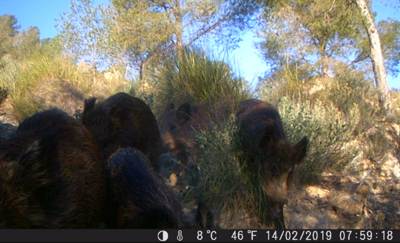| Computer Vision Competition - Count the Wild Beasts |
| Written by David Conrad |
| Sunday, 16 May 2021 |
|
iWildCam 2021, a computer vision contest to count the number of animals recorded in camera trap data, is currently underway on the Kaggle platform. Data for the competition comes from the Wildlife Conservation Society (WCS) and iNaturalist, and is hosted on Azure by Microsoft AI for Earth. Like the iNaturalist competition we report on in 2018, this is an FGVC (Fine Grained Visual Categorization) competition and this time is part of the FGVC8 workshop of the CVPR 2021, the annual computer vision event which this year is being held virtually from June 10-25. According to the competition description on Kaggle: Ecologists all over the world use camera traps to monitor biodiversity and population density of animal species. In order to estimate the abundance and density of species in camera trap data, ecologists need to know not just which species were seen, but also how many of each species were seen. However, because images are taken in motion-triggered bursts to increase the likelihood of capturing the animal(s) of interest, object detection alone is not sufficient as it could lead to over or undercounting. Being an enthusiastic, if not very successful, wildcam user I do appreciate the problem of trying to count individual animals when you sometimes see only snouts or tails and some are obscured by vegetation - and of course in many cases you have night time shots when perhaps all you see is sets of eyes! Even a human looking at this still will find it tricky to count the wild boars, but can computer vision do the twin task of identifying the species and counting the individuals? On the contest's GitHub page there's a rather more difficult example - this time there are a total of six baboons in the sequence: For an even harder task consider the still below from a video that is part of the dataset. More information about the datasets, the challenges they represent and two models that can be used by contestants can be found in The iWildCam 2021 Competition Dataset, an archiv paper from Google and the California institute of Technology (Caltech). To date 39 teams are participating in the contest and there's still time to join in before the team merger deadline. The final date for submission is May 28 and if you've missed the 2021 contest notice that the paper states: In subsequent years, we plan to extend the iWildCam challenge by adding additional data streams and tasks, such as detection, segmentation, or distance estimation. We hope to use the knowledge we gain throughout these challenges to facilitate the development of systems that can accurately provide real-time species ID and counts in camera trap images at a global scale. The conclusion continues: Any forward progress made will have a direct impact on the scalability of biodiversity research geographically, temporally, and taxonomically.
More InformationThe iWildCam 2021 Competition Dataset by Sara Beery, rushi Agarwal, Elijah Cole and Vighnesh Birodkar Related ArticlesIdentifying Birdsong - A Kaggle Machine Learning Competition iNaturalist Launches Deep Learning-Based Identification App Kaggle Enveloped By Google Cloud
|
| Last Updated ( Sunday, 16 May 2021 ) |




